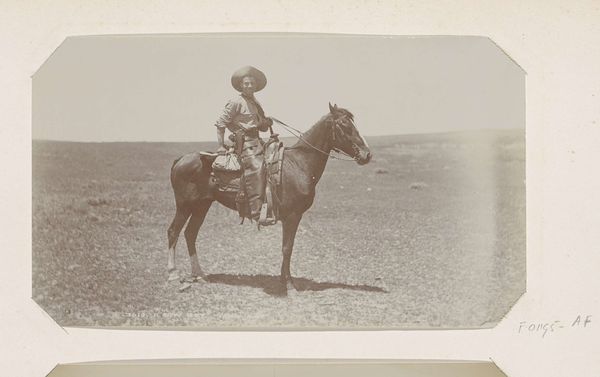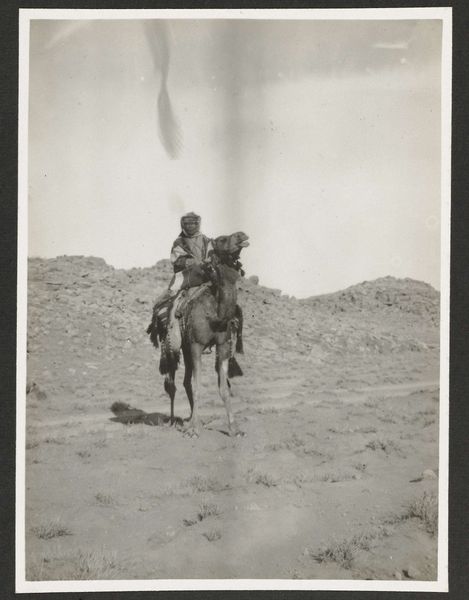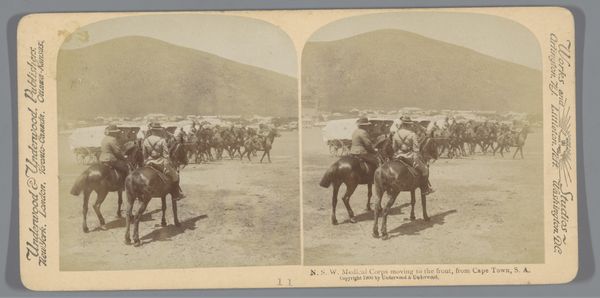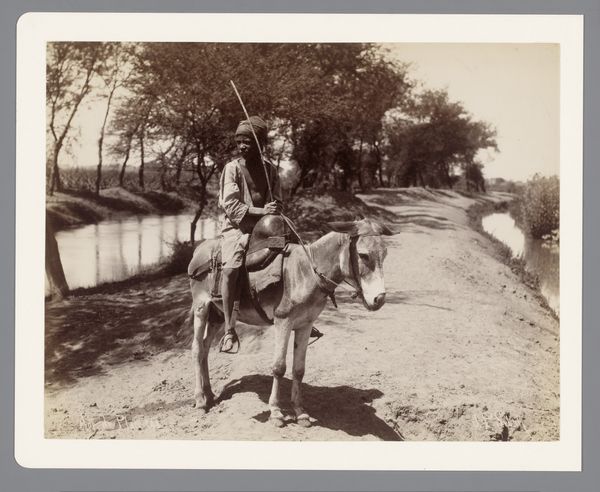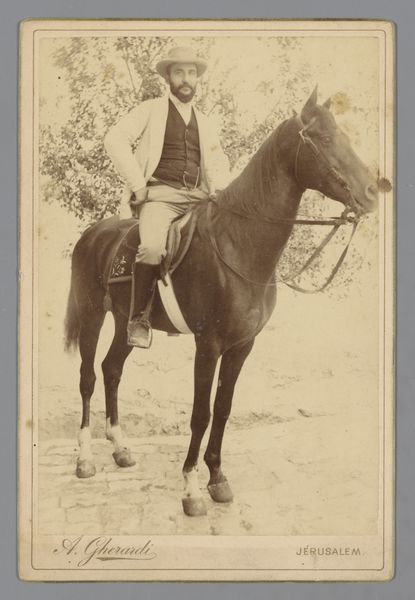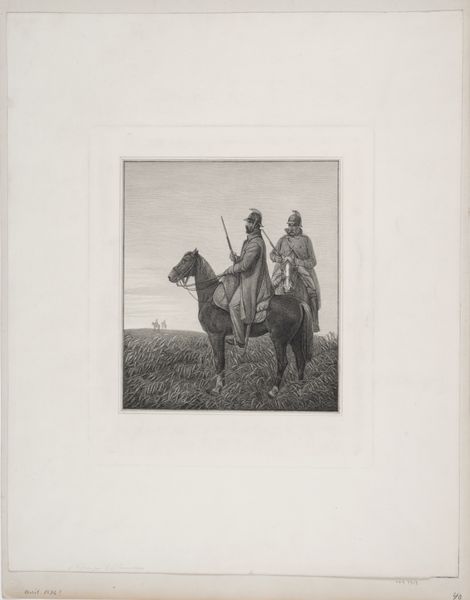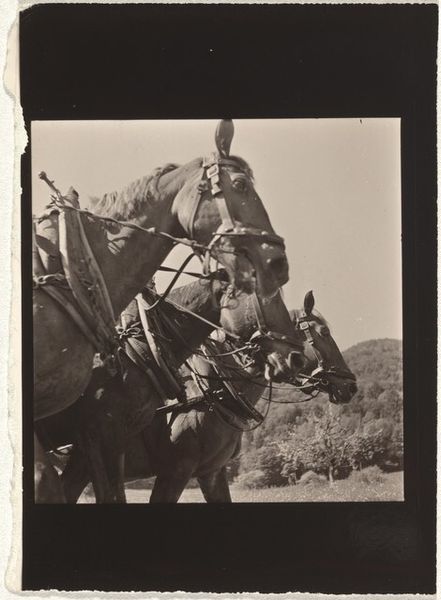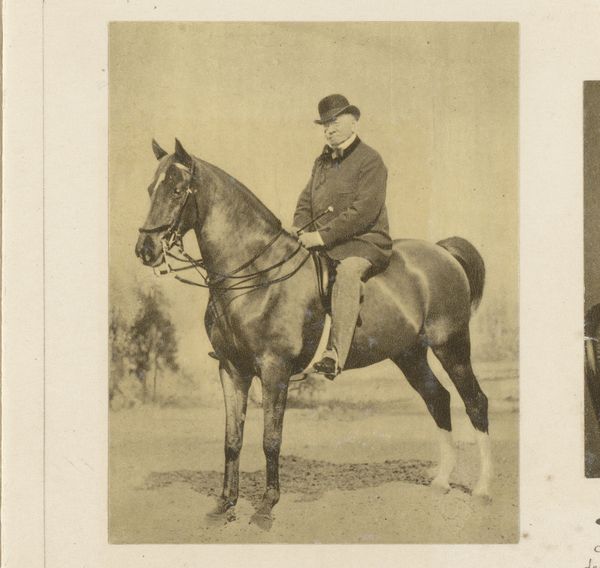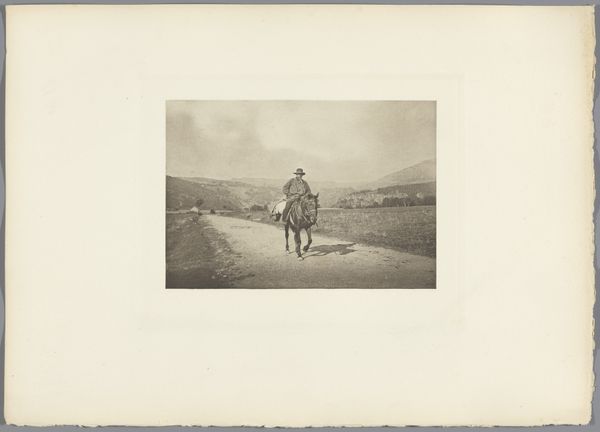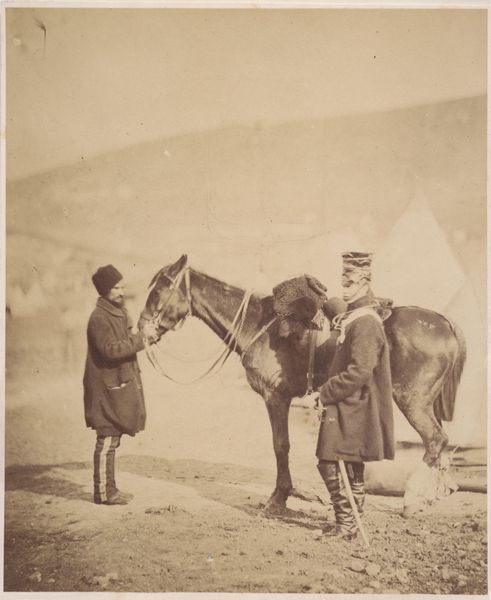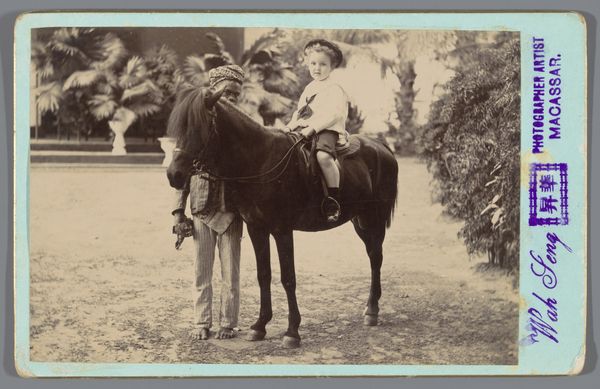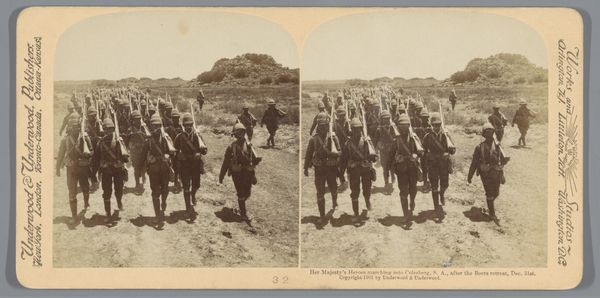
photography, albumen-print
#
portrait
#
aged paper
#
pale palette
#
light coloured
#
landscape
#
photography
#
personal sketchbook
#
orientalism
#
horse
#
albumen-print
Dimensions: height 108 mm, width 164 mm
Copyright: Rijks Museum: Open Domain
This photograph of an Arab man on horseback with a lance was produced by Famin et Cie. It's easy to overlook the role of photographic prints in the history of art, but in their time they represented a new mode of image production. Photography was an industrial process from the beginning, dependent on chemical treatments and mechanical reproduction. This image would have begun with the photographer making a plate using a camera, capturing the image, and then using this to print out the photograph. The sepia tone gives it a warmth, and the lack of color suggests that it was made in the early years of photography, before the rise of color film. Consider how photographs like these changed the way people understood the world, allowing them to see people and places they might never otherwise encounter. It's an early example of visual globalization, where images, like commodities, are mass-produced and circulated, shaping perceptions of labor, politics, and consumption on a global scale. Looking closely at the materials, processes, and historical context allows us to appreciate how this photograph is more than just a picture; it’s a product of its time, reflecting the complex intersections of art, industry, and culture.
Comments
No comments
Be the first to comment and join the conversation on the ultimate creative platform.
